Every time I walk into a small living room, I see a blank canvas just waiting for a touch of creativity and warmth. Small spaces have so much potential, and I love discovering ways to turn them into welcoming retreats that feel both open and inviting. I know that anyone can create a sense of coziness and space, no matter how tiny their living room may seem.
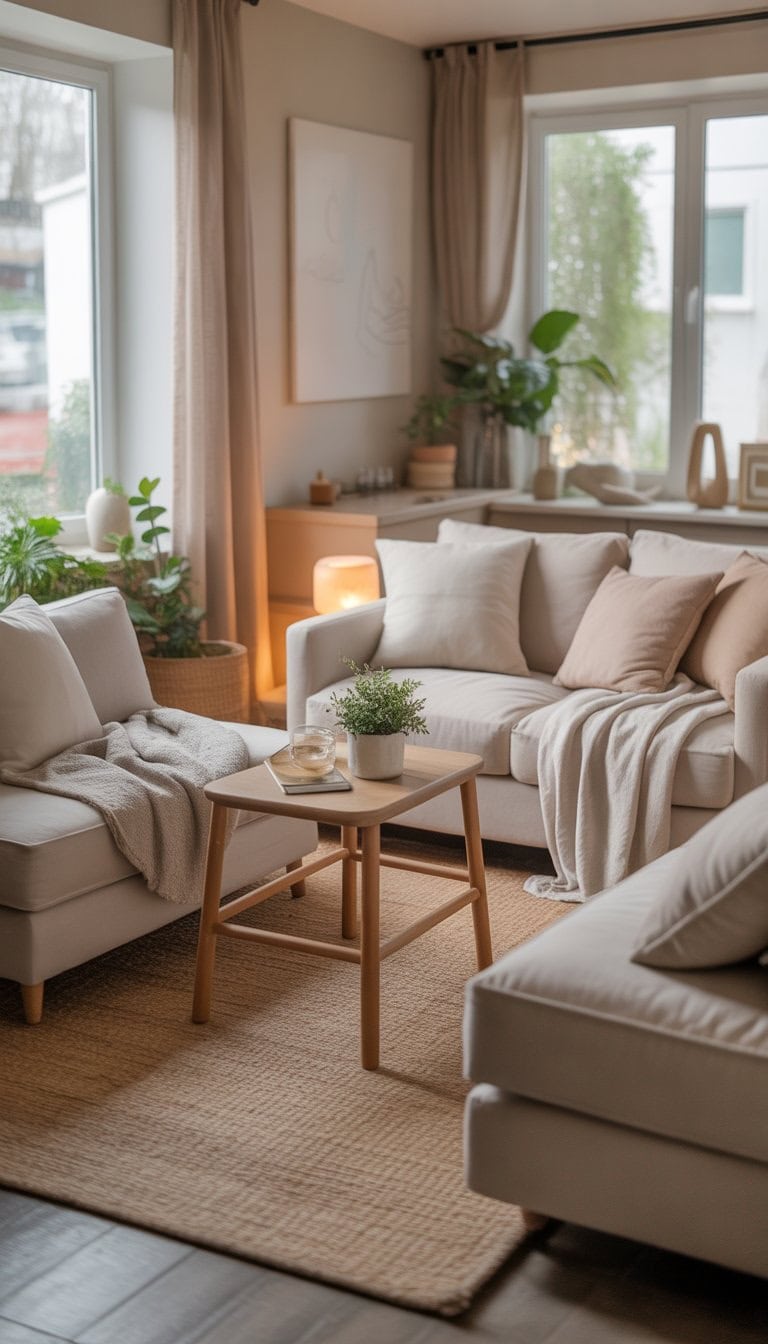
Sometimes it feels overwhelming to figure out where to start, but that’s why I’m passionate about sharing simple, thoughtful ideas that actually work. With a few clever changes and a fresh perspective, any small living room can become a place where you feel relaxed and inspired every day. If you’re looking for encouragement and real solutions, you’re in the right spot.
Use light, neutral colors on walls and furniture to open up the space
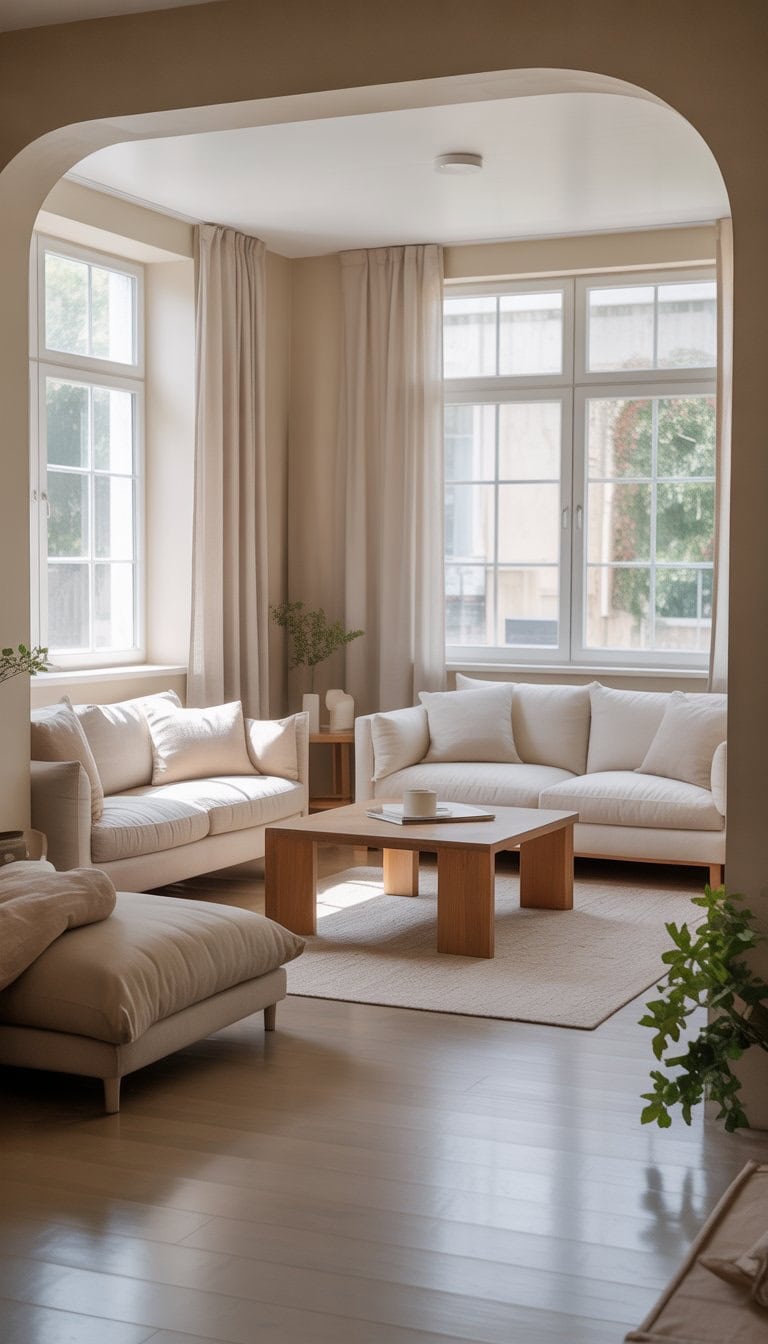
I always choose light, neutral colors when I want a small living room to feel bigger. Whites, creams, and soft grays help reflect light and make the space look bright and airy.
When I use these shades on my walls and furniture, everything feels more open. Mixing light browns, beige, or taupe works well, too.
If I add a rug or some decor in similar tones, the whole room feels pulled together. Using these neutral shades really helps create a calm and cozy vibe.
For rooms short on natural light, I find that pastels paired with neutrals make a big difference. It keeps everything feeling fresh without being too stark.
Add a larger area rug to define the seating area and add warmth
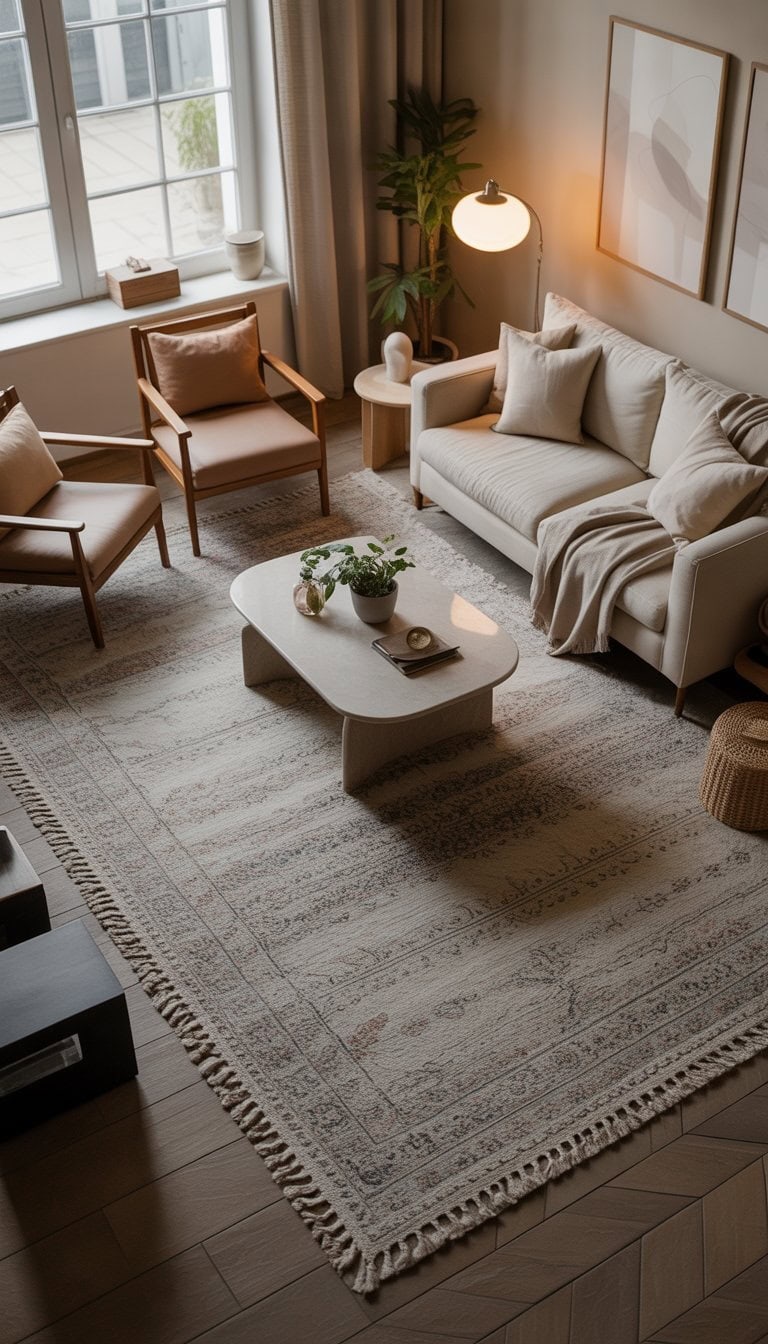
I like how a large area rug makes a small living room feel more connected. When I put down a bigger rug, it brings my chairs, sofa, and table together in one cozy spot. The room feels less scattered and more inviting.
For me, the softness underfoot is a huge plus. It adds warmth, both in look and feel. Even simple or neutral rugs make the space feel homier.
I’ve learned that picking a rug that sits under all my main furniture works great for defining the area. It can also show off my furniture and pull all the colors in the room together. If you want ideas, you can check out helpful tips about area rugs in the living room.
Install wider, fuller curtains for a cozy yet airy look
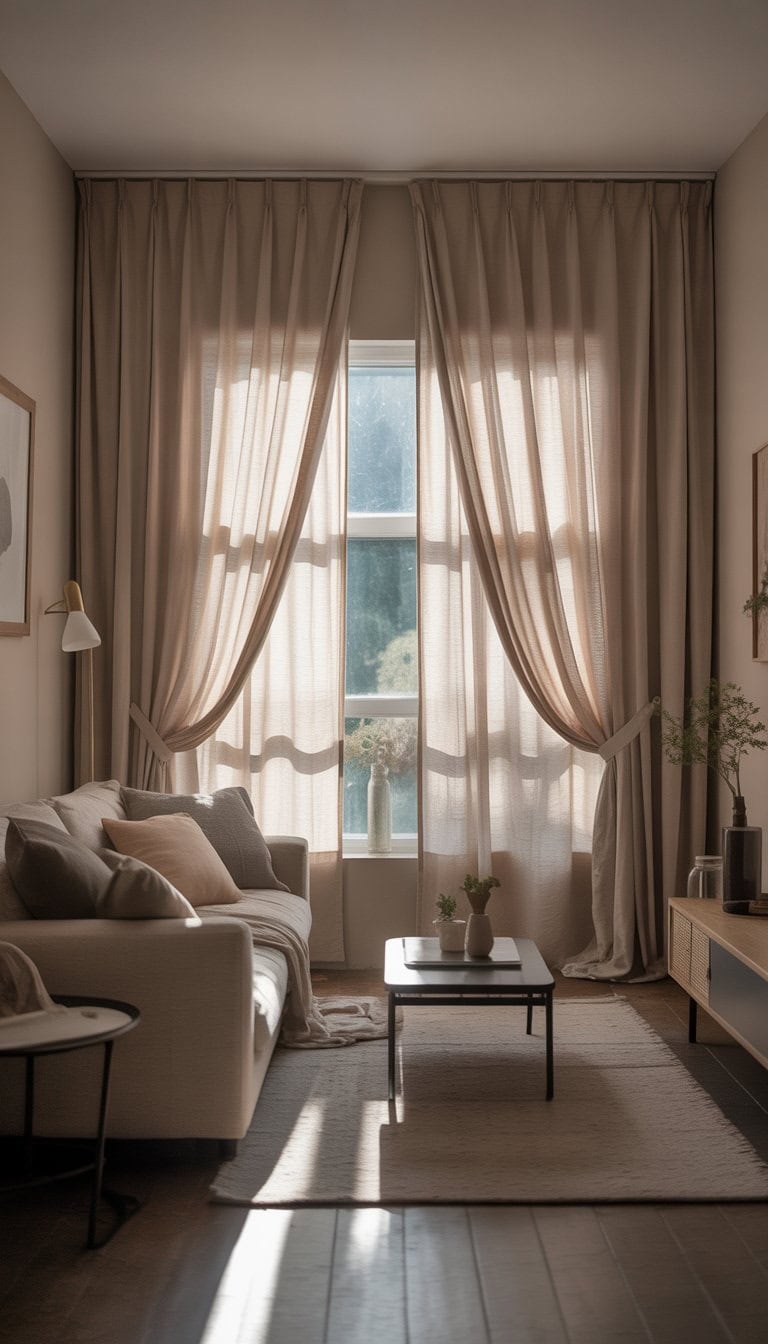
When I want my living room to look cozier without feeling cramped, I always pick curtains that are wider and fuller. Hanging them wide past the edges of the window makes the windows look bigger.
Fuller curtains with soft fabric add warmth, but they still let light come in. This helps the room feel bright and open, while still offering privacy.
I found that choosing a rich color or even a light, sheer option makes such a difference. For extra style, I use curtain rods that go out further from the frame, like in this helpful tip about using bendable rods. A wide and full look keeps my space both inviting and breathable.
Opt for multifunctional furniture like a storage ottoman
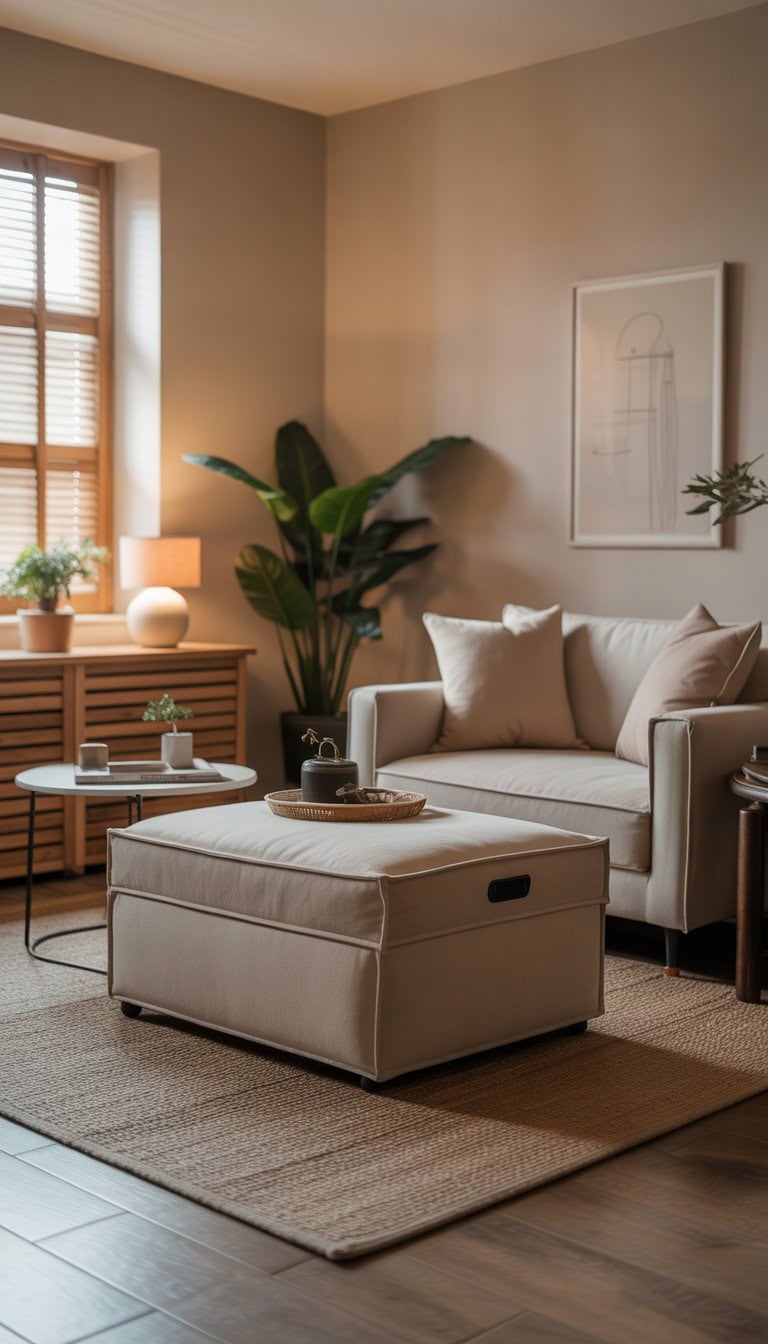
When I started updating my small living room, I realized how much every inch counts. That’s why I went with multifunctional pieces, especially a storage ottoman. It gives me a comfy spot to rest my feet and hides away extra blankets or remotes.
I like that I can also use it as extra seating when friends visit. Some days, it’s even my coffee table. Multipurpose furniture like a storage ottoman keeps the area organized and clutter-free.
If you’re trying to save space, these smart choices work wonders. I found some great ideas on using storage ottomans and other double-duty pieces at Wayfair and The Spruce.
Place a slim console table behind the sofa to maximize space
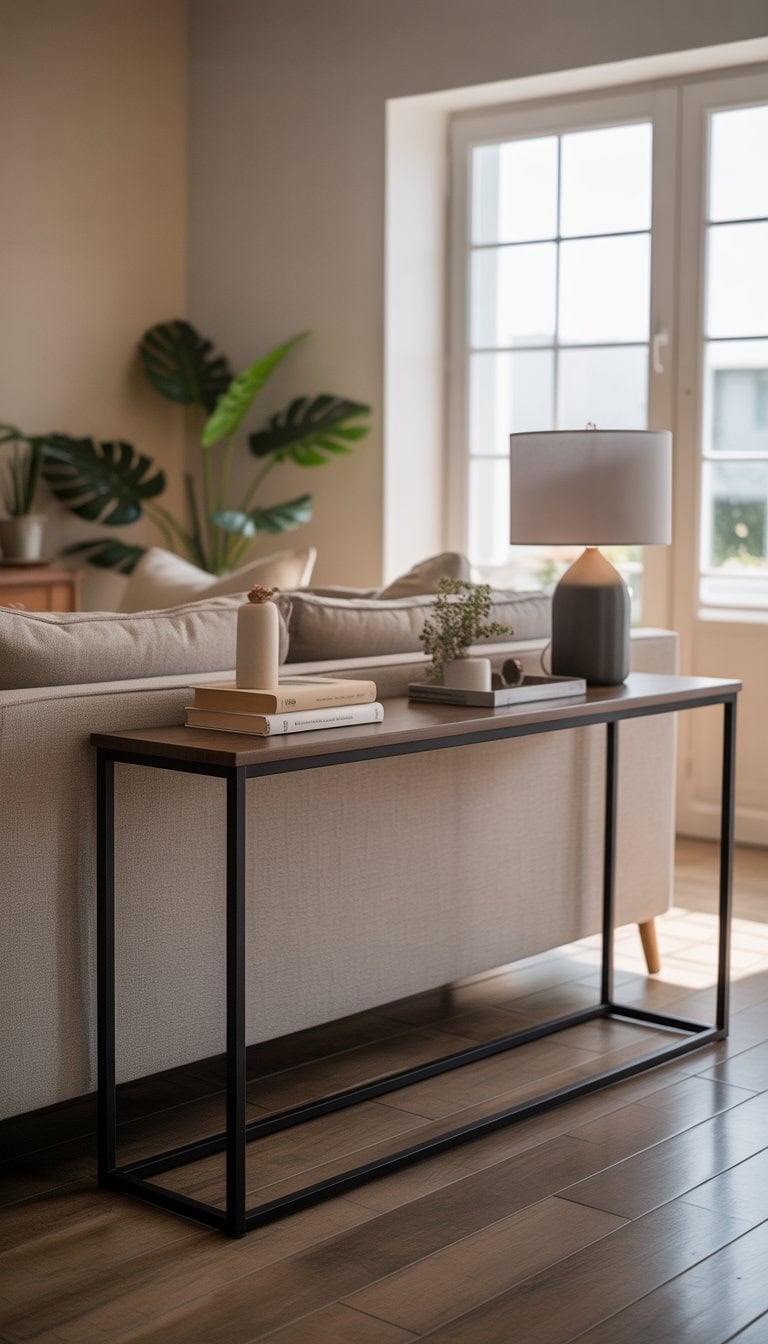
I love adding a slim console table behind my sofa. It makes the most of the space, especially in a small living room. Instead of letting that area go to waste, I can store books, remotes, or even a few plants.
The table creates a little zone for decorations. I might add a lamp for extra light or display some framed photos. It feels tidy and stylish without crowding the room.
When my sofa sits in the middle of the space, sliding a console table behind it helps define the area. I’ve found this trick adds function and a cozy touch. There are lots of ways to style the table, which you can see in these styling ideas.
Incorporate floating shelves for stylish storage without clutter
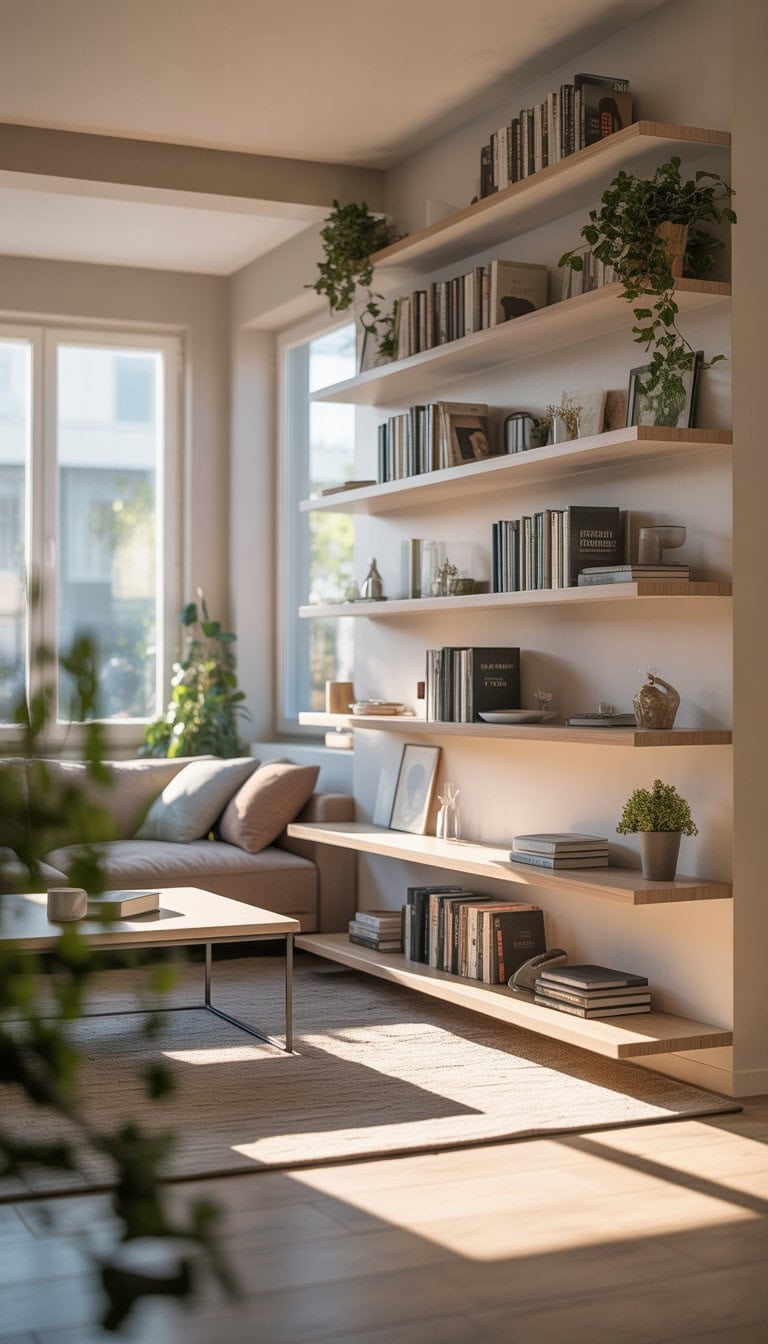
I love using floating shelves to save space in my small living room. They give me a spot to display favorite photos, small plants, and pretty vases. Because they attach right to the wall, I can keep the floor clear and avoid bulky furniture.
I like to layer a few shelves at different heights for visual interest. Mixing baskets, books, or art helps the shelves look neat but personal.
Floating shelves also work great for storing everyday items I use often. I find it’s easy to switch out decorations by season, which helps me keep my room feeling fresh and cozy. For more ideas on shelf styling, I sometimes check out inspiration from Southern Living.
Use mirrors strategically to reflect light and create depth
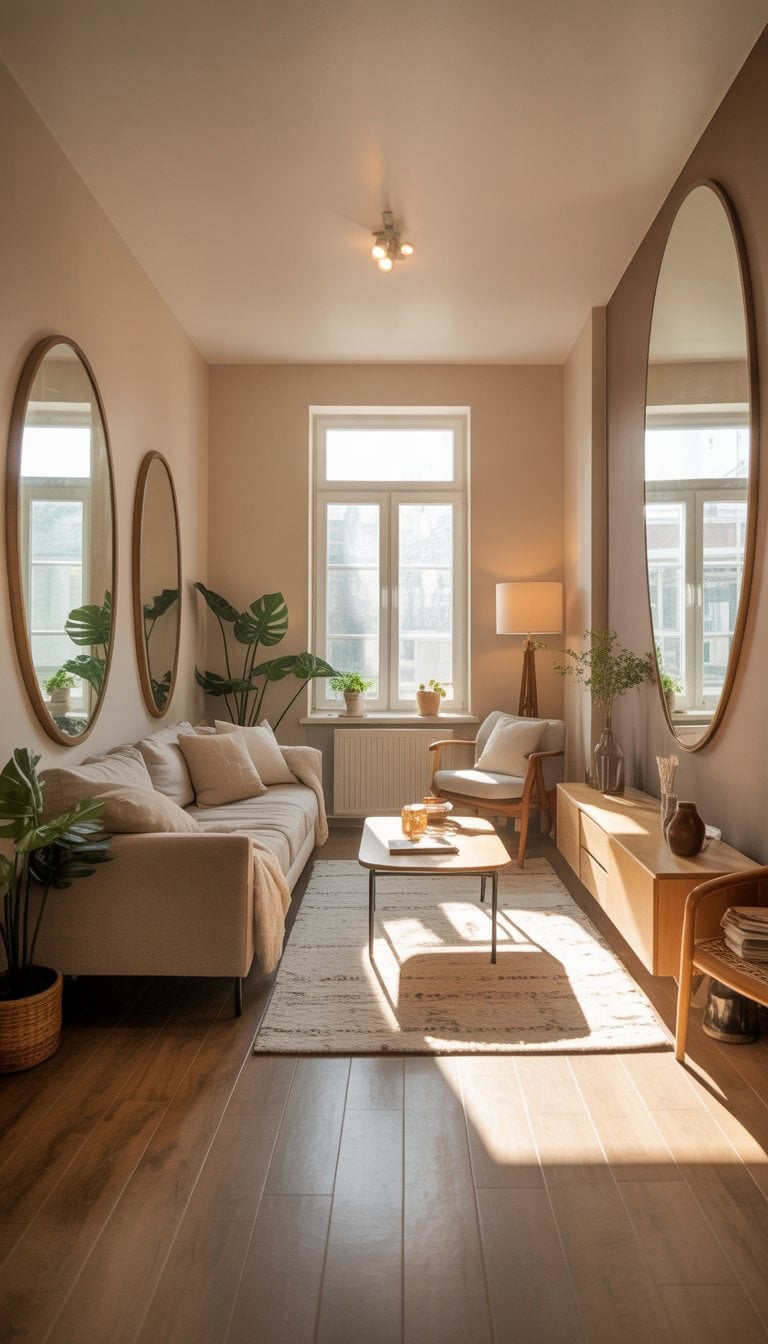
I always find that mirrors are a simple way to open up a small living room. If I place a mirror across from a window, it bounces more sunlight into the space. This makes the whole room feel brighter and less crowded.
Sometimes, I choose floor-to-ceiling mirrors to maximize the effect. Even a medium-sized mirror on one wall can make a big difference. I try to avoid cluttering the area around the mirror so the reflection stays clean and sharp.
Using mirrors also adds depth, which helps the room feel bigger than it is. Designers often recommend this trick because it works for so many spaces, as shown in this guide to using mirrors for more light and space.
Choose a compact sectional sofa to maximize seating
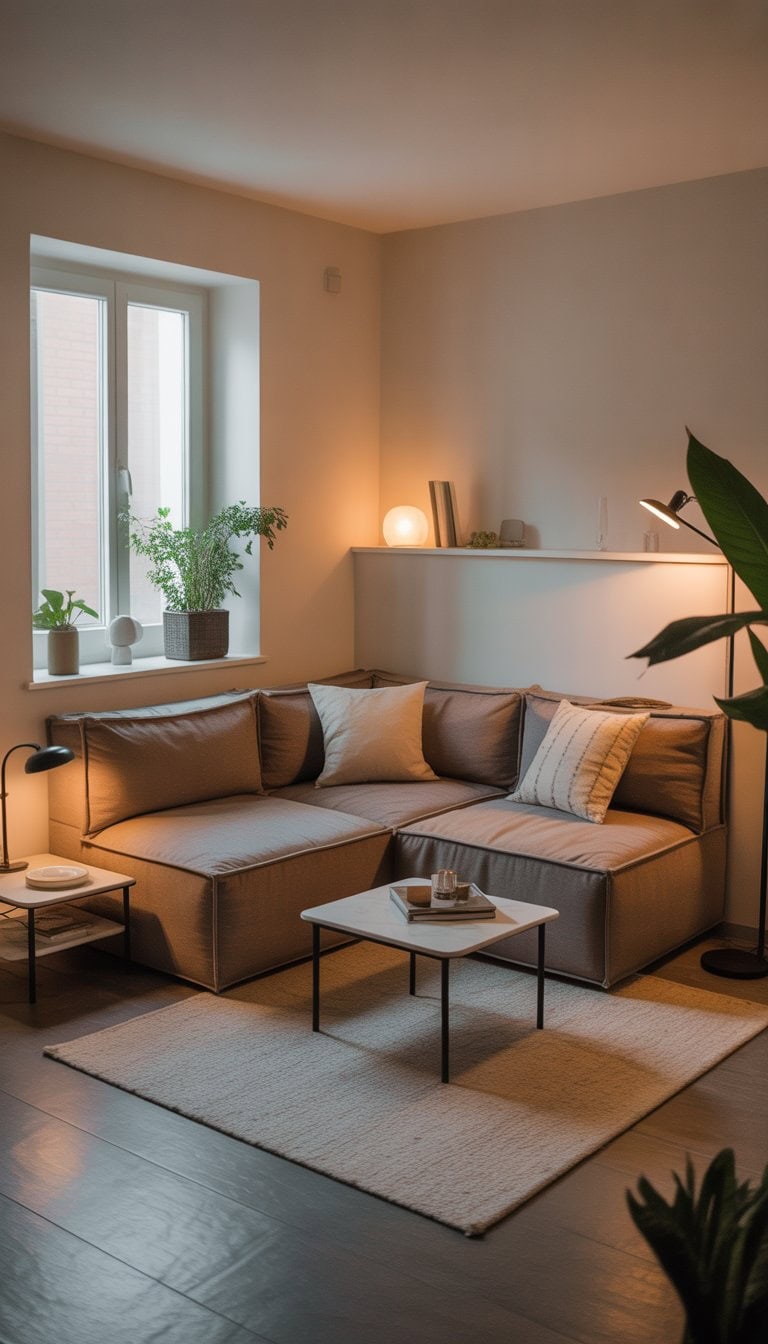
When my living room felt too small, I switched to a compact sectional sofa. It instantly made the space feel more open and welcoming. With a small sectional, I can fit more people without feeling crowded.
I love how these sofas are designed for tight spaces. Many are 82 inches wide or less, so they fit well in apartments and small homes. I found great options that managed to seat three people comfortably without overwhelming the room.
Choosing the right sofa really changed the way I use my living room. Sectionals with a modular design let me play with the arrangement. For cozy extra seating, these small-scale sectionals are a practical pick.
Layer soft textiles like throws and cushions in natural fibers
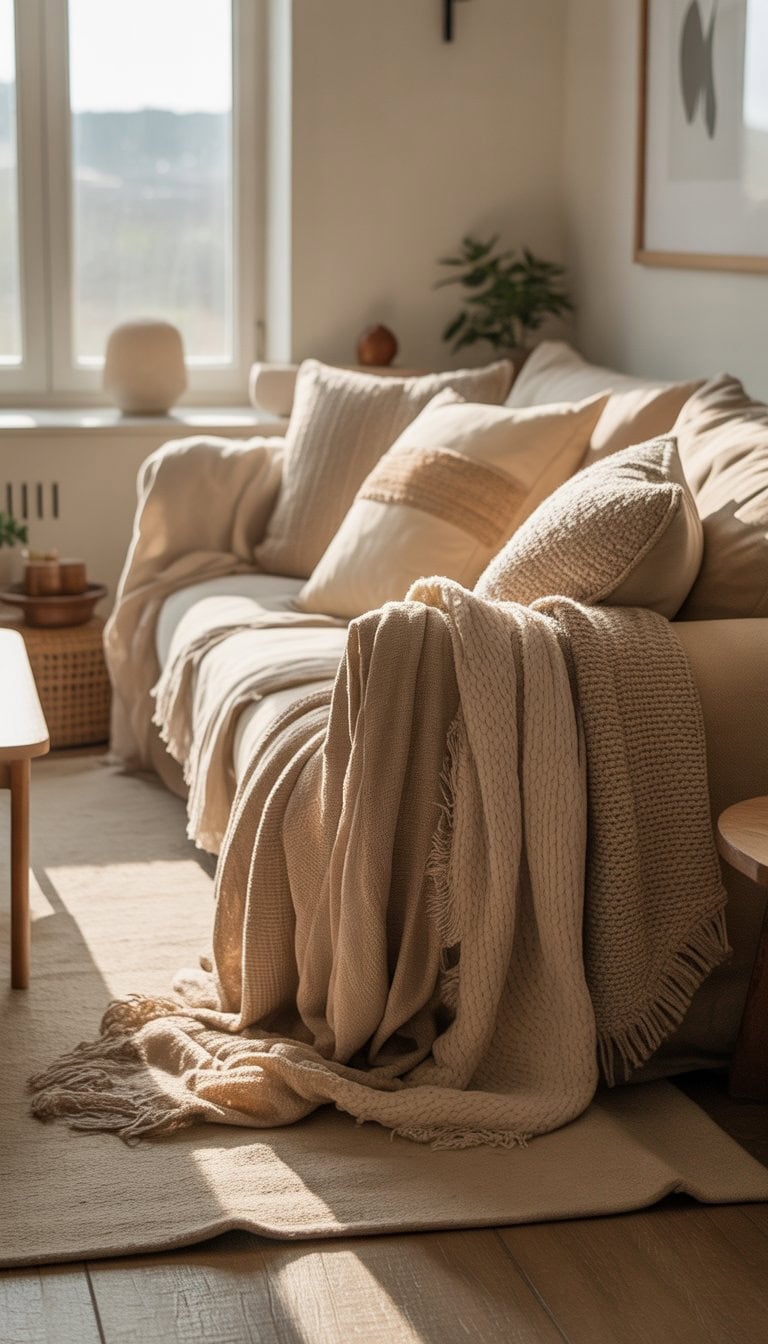
I always reach for cozy throws and soft cushions to make my living room more inviting. Using cotton, wool, or linen feels warm and welcoming without being heavy. These natural fibers breathe better and add comfort.
I don’t just stick to one texture. Mixing knitted throws, velvet pillows, and woven blankets brings more depth and interest to the space. This layering is my favorite way to create a casual but stylish look.
Adding several cushions in different shapes and sizes makes it easy to switch up the style. Placing a chunky knit throw on my couch or chair makes everything feel extra snug. It’s a simple trick that helps any small room feel more relaxed and homey, like these cozy ideas.
Add recessed or wall-mounted lighting to save floor space
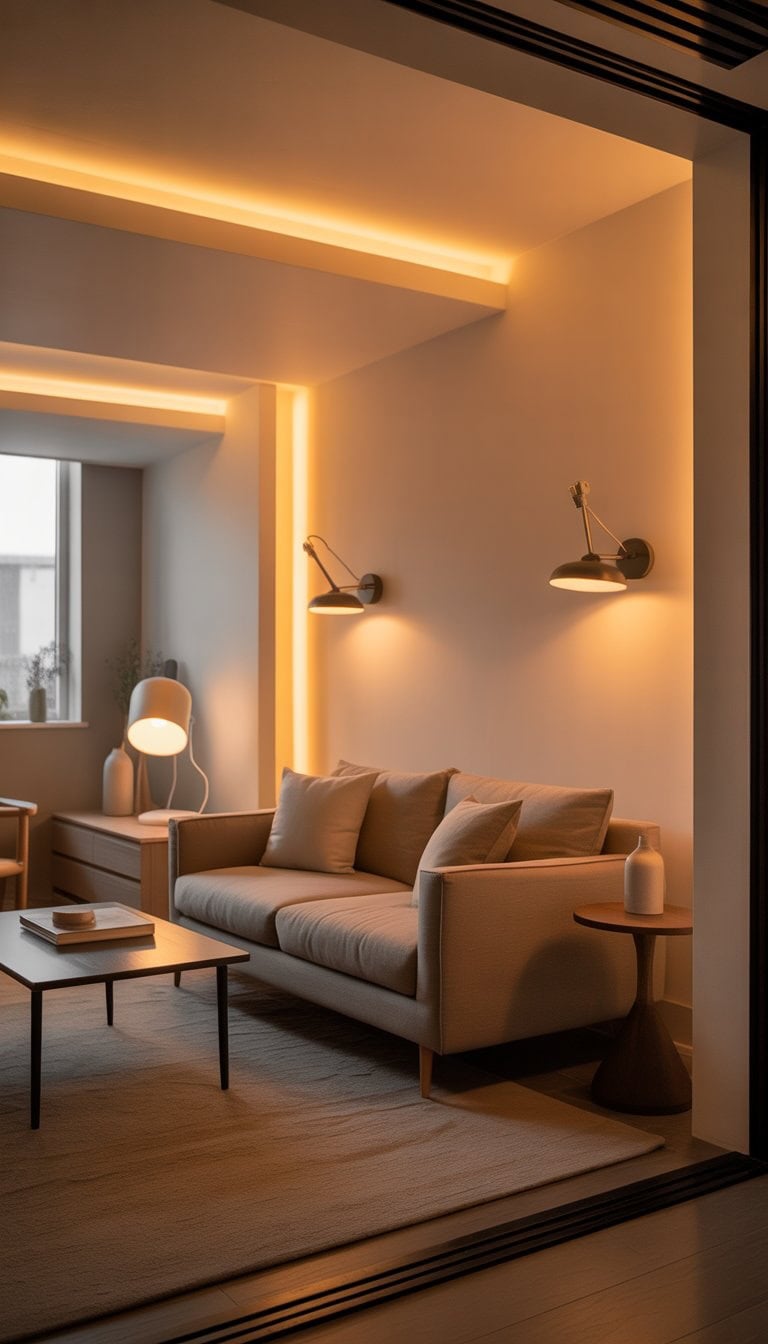
When I’m working with a small living room, I always go for lighting that doesn’t take up any extra room. Recessed lights are one of my favorites because they fit right into the ceiling. This type of lighting keeps the floor clear and gives even light throughout the space.
Wall-mounted lights are another great choice. They can be stylish and functional at the same time. I love how they add a modern touch without crowding the room.
If you need more ideas for space-saving lighting, check out suggestions for using wall-mounted lighting and creative options like recessed lighting.
Bring in natural materials like jute rugs and wooden accents
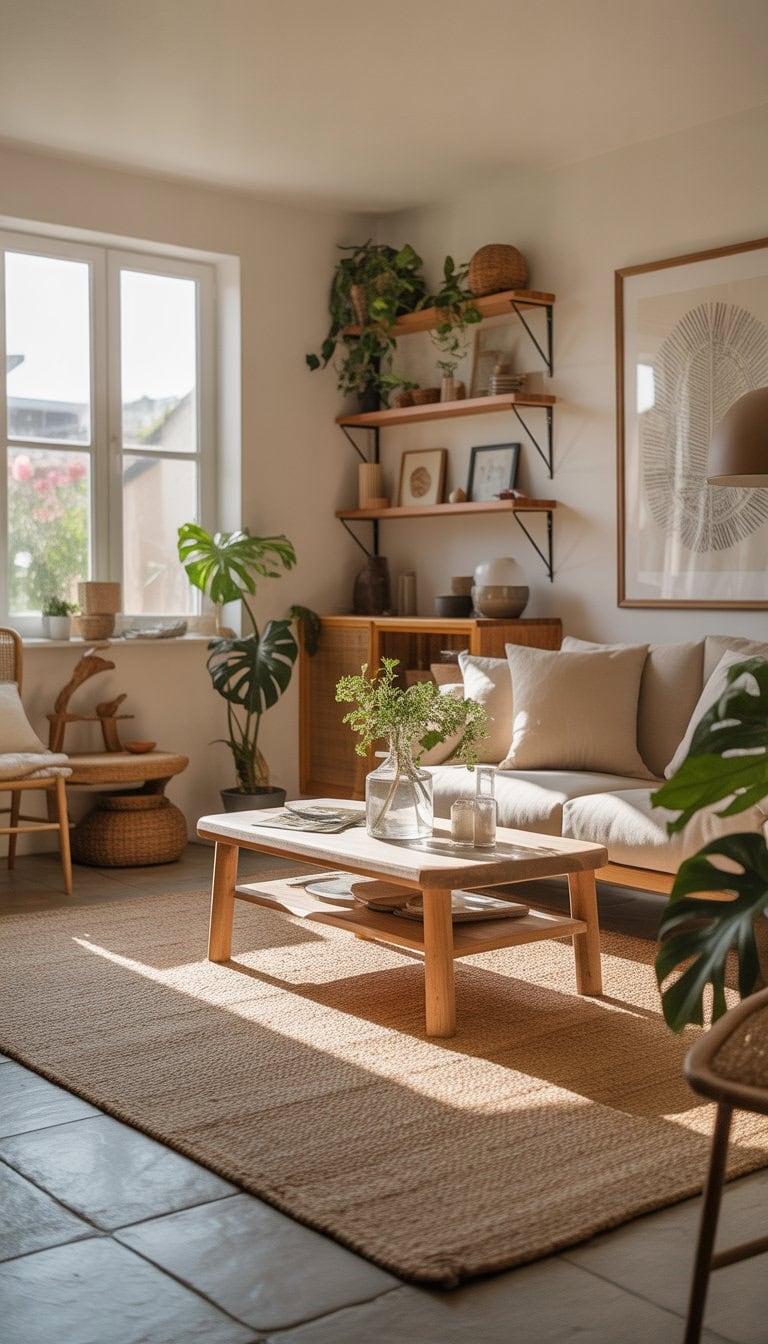
I love using natural materials when decorating my living room. They help make a space feel warm and calm without much effort.
A jute rug is one of my favorite choices. It’s sturdy, simple, and brings texture underfoot. Rugs like these can make the floor feel interesting and grounded.
Wooden accents are another trick I use. A wooden coffee table, bookshelf, or even a few small wood décor pieces bring earthy vibes into the room. Layering materials like these adds a cozy and relaxed look that never feels forced.
Mixing jute and wood with soft fabrics makes the room both comfortable and inviting. For more inspiration, I found some great ideas for using jute rugs and wood.
Keep clutter at bay with hidden storage solutions
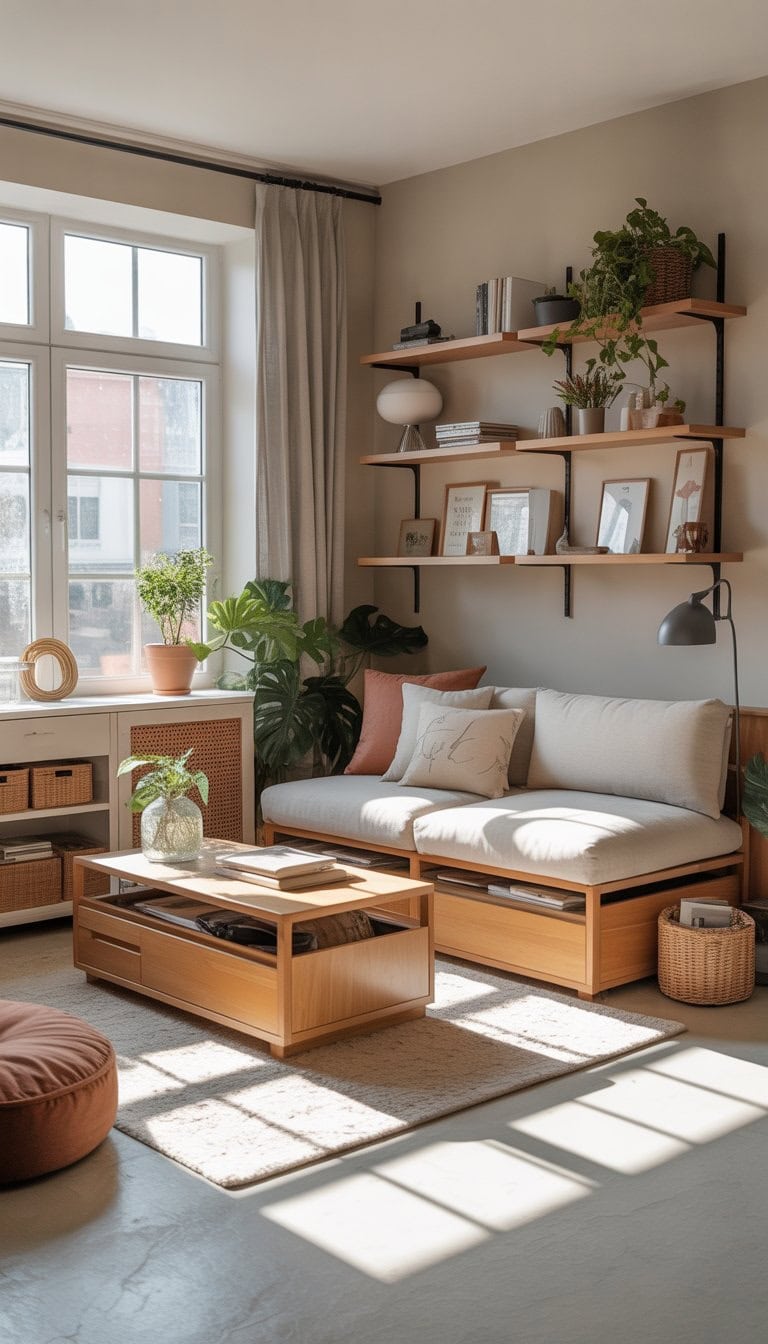
I’ve learned that clutter makes any small living room feel cramped fast. That’s why I rely on hidden storage to keep my space tidy. Benches with lift-up tops are a favorite of mine. They give extra seating and a spot to stash books and blankets.
I also love using coffee tables with shelves or drawers built in. It’s amazing how much you can store in these without anyone noticing. Storage ottomans are another go-to for me, hiding away board games or magazines.
Wall-mounted cabinets help, too. They keep precious floor space open and make the room feel bigger. If you need more ideas, check out some smart storage solutions that really work for small living rooms.
Select furniture with exposed legs to create visual space
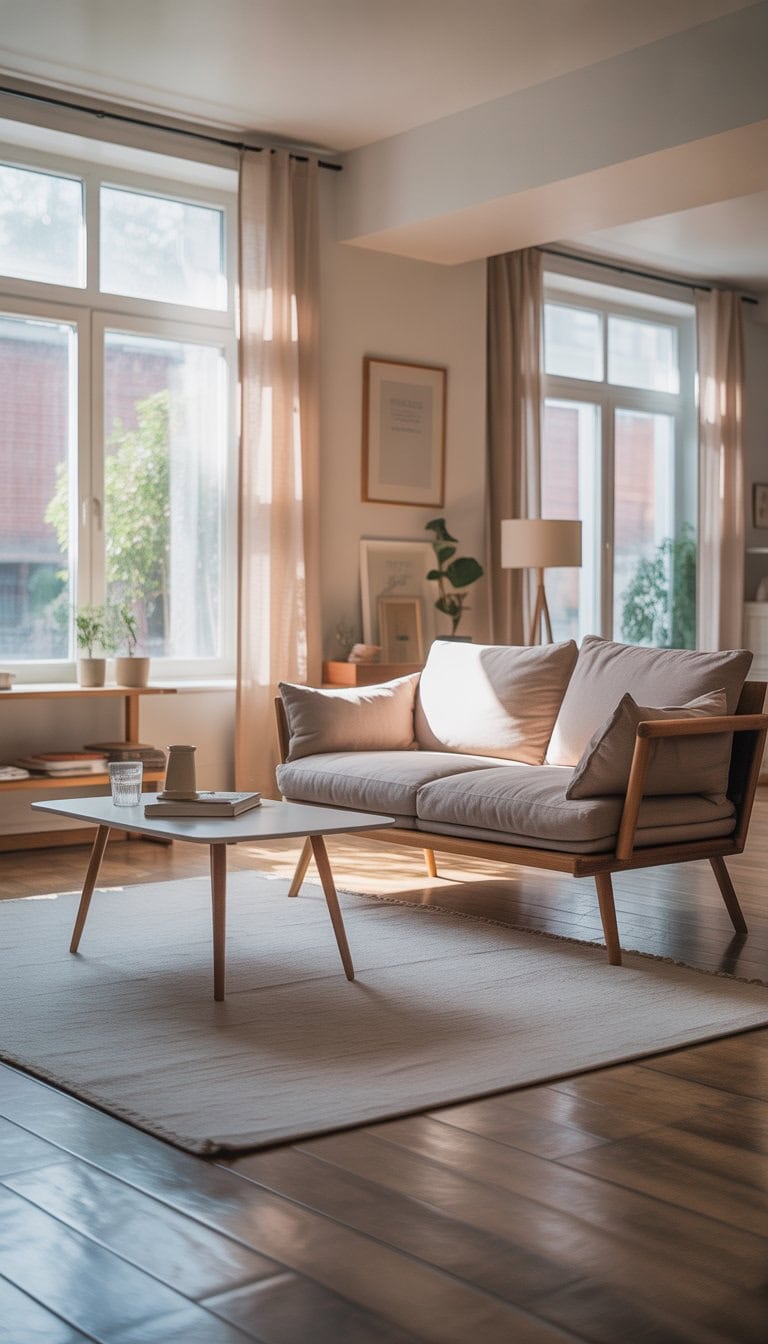
I’ve learned that furniture with exposed legs can make any small living room feel lighter and more open. When I pick sofas, chairs, and tables with visible legs, the floor appears bigger and less crowded.
This simple trick helps the eye travel across the room without stopping. It’s like giving the space room to breathe.
I prefer this look because it feels airy yet still cozy. If you want more ideas, check out how designers use exposed legs to make rooms feel larger at Bless’er House.
I always avoid bulky pieces that touch the floor everywhere. Choosing slim furniture on legs is my go-to for a spacious, welcoming vibe.
Use vertical stripes or wallpaper to add height illusion
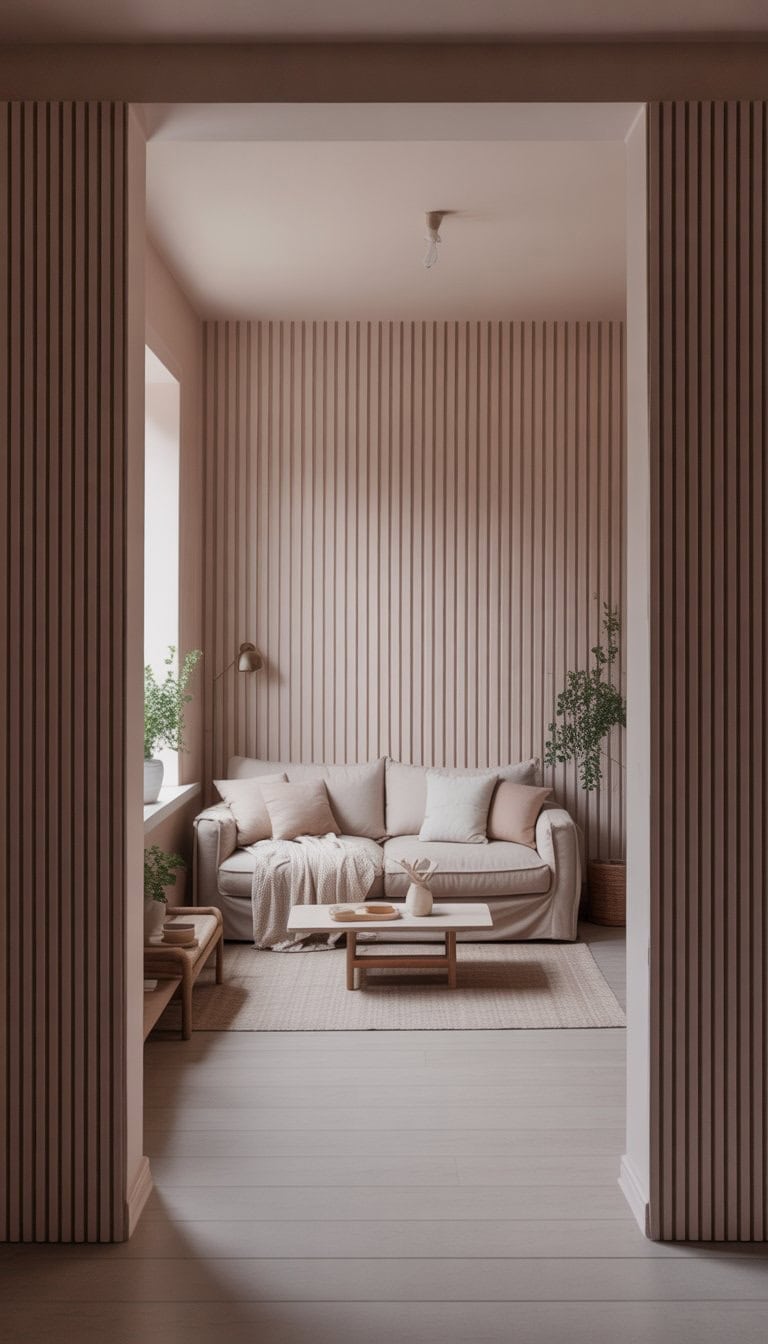
I’ve noticed that adding vertical stripes to a living room can really change the feel of the space. When I use striped wallpaper or paint stripes on the walls, the eye is drawn upward.
This trick makes the ceiling look taller and the whole room look bigger. Even a simple striped accent wall has a strong effect.
I like to pick neutral or soft colors for the stripes so the design doesn’t feel too busy. If you want to see a visual example, check out how vertical stripes make a room look taller.
Incorporate plants in small pots or hanging planters for freshness
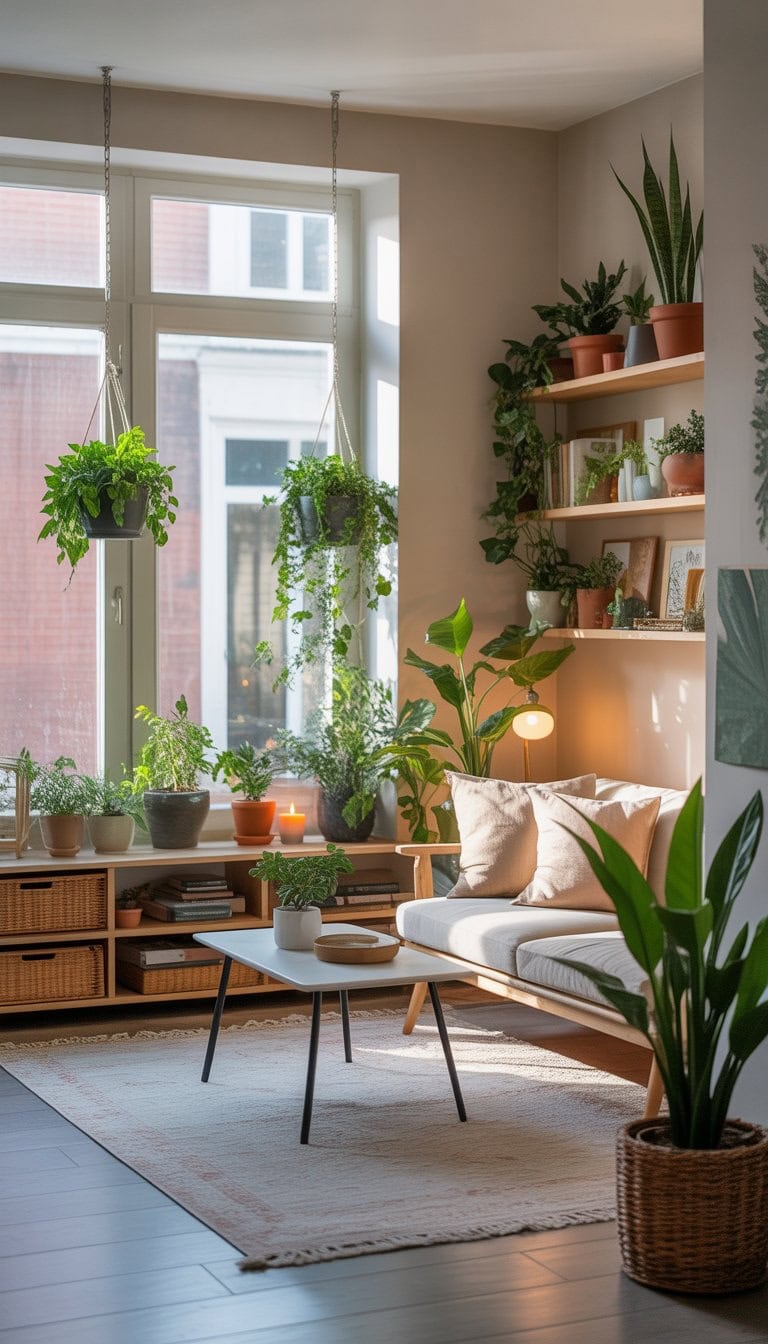
I love adding small potted plants around my living room. They bring a fresh look to even the tiniest spaces and make the room feel more peaceful.
Hanging planters are one of my favorite ways to save space and add some greenery up high. I’ve found that trailing plants look beautiful when they cascade from shelves or ceiling hooks.
I often mix a few types of plants in different pots to add variety. Even just a small succulent or two on a side table makes a big difference in how my space feels.
Opt for glass or acrylic furniture pieces to keep things light
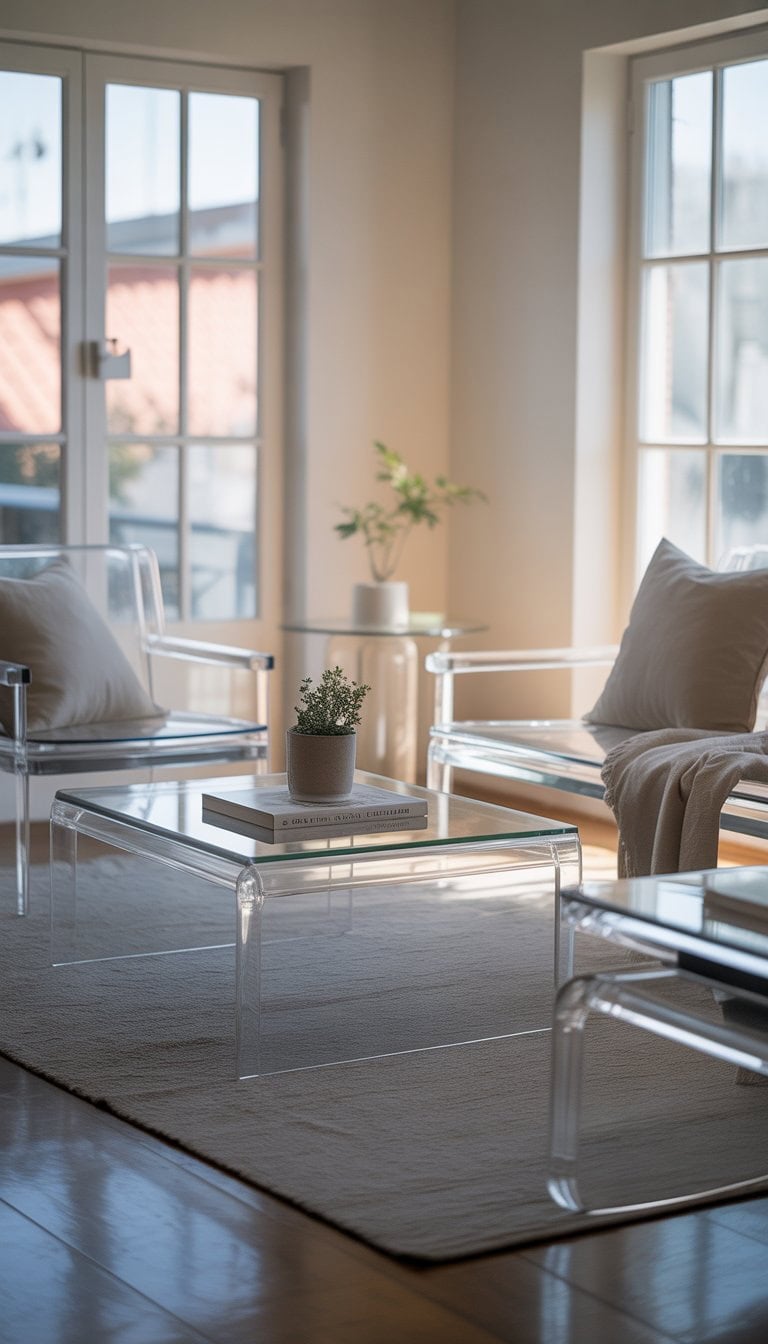
When I design small living rooms, I love using glass or acrylic furniture. These pieces don’t block light or sightlines, so everything feels more open.
A glass coffee table or an acrylic chair practically disappears, keeping the space from looking crowded. I find this really helps if the room feels tight or closed in.
If I want the space to look even bigger, I mix in light-colored walls and furniture. Glass and acrylic pair well with almost any style, which lets me be creative without making the room feel heavy. You can see more about clear furniture ideas at HOB Furniture and House Beautiful.
Create a focal point with a bold piece of artwork
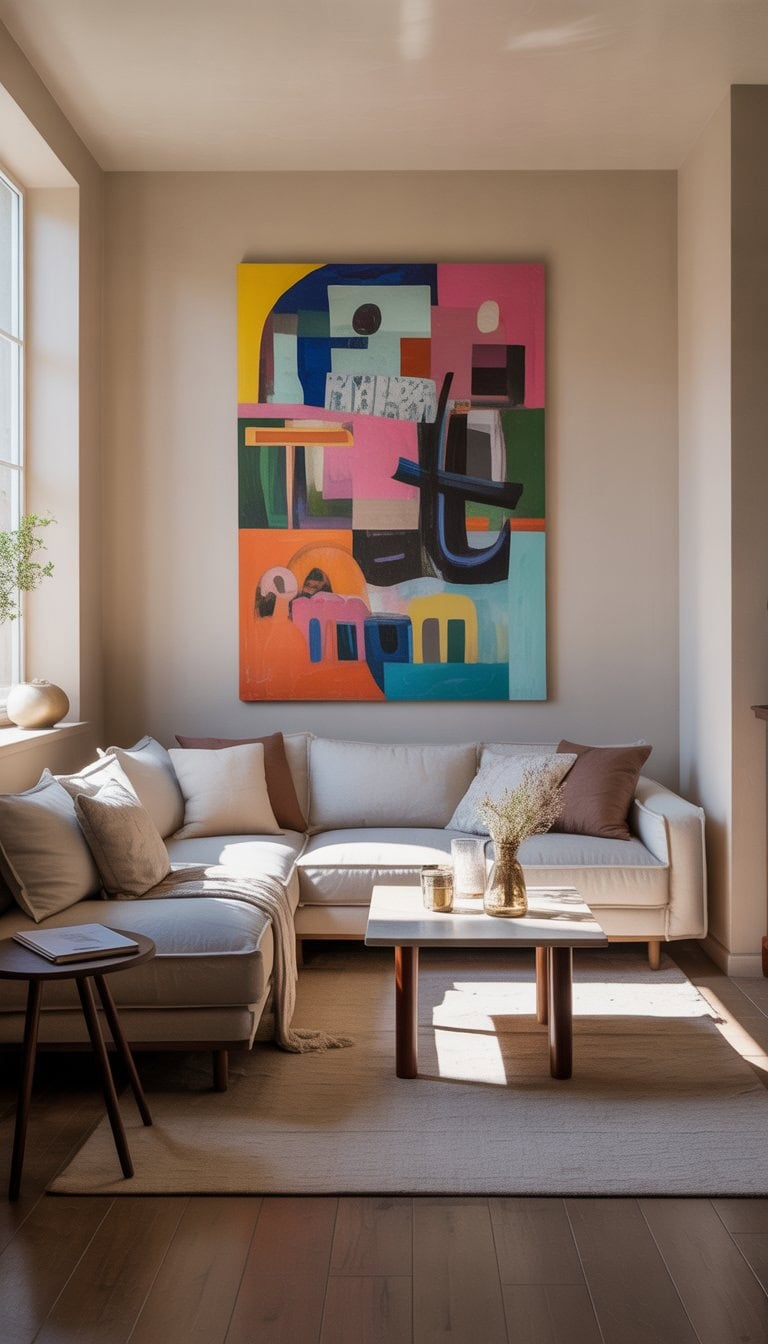
When I want to make a small living room feel special, I choose one bold piece of artwork as my focal point. It’s the first thing people notice when they walk in, and it sets the style for the space.
A large painting or photograph on the wall helps draw the eye upward. This trick also makes the room look bigger and less crowded. I avoid busy gallery walls and stick with one standout piece to keep things simple and open, just like some designers suggest on Ideal Home.
My favorite approach is to pick artwork that has colors I love. It makes the whole room feel more personal and inviting.
Minimize accessories to keep the room feeling open

I find that too many decorations can make a small living room feel crowded. When I want my space to breathe, I pick just a few favorite items to display. This way, the room looks neat and welcoming.
I focus on simple things, like one or two framed pictures and a cozy throw pillow. By avoiding lots of little things on tables or shelves, I give the eyes room to rest.
Choosing only what matters most helps me create a relaxing spot. If I ever want a change, it’s easy to swap out a few pieces without making the space feel busy. Keeping it simple really does make my living room feel more open, as many design experts suggest.
Integrate built-in bookshelves for seamless storage
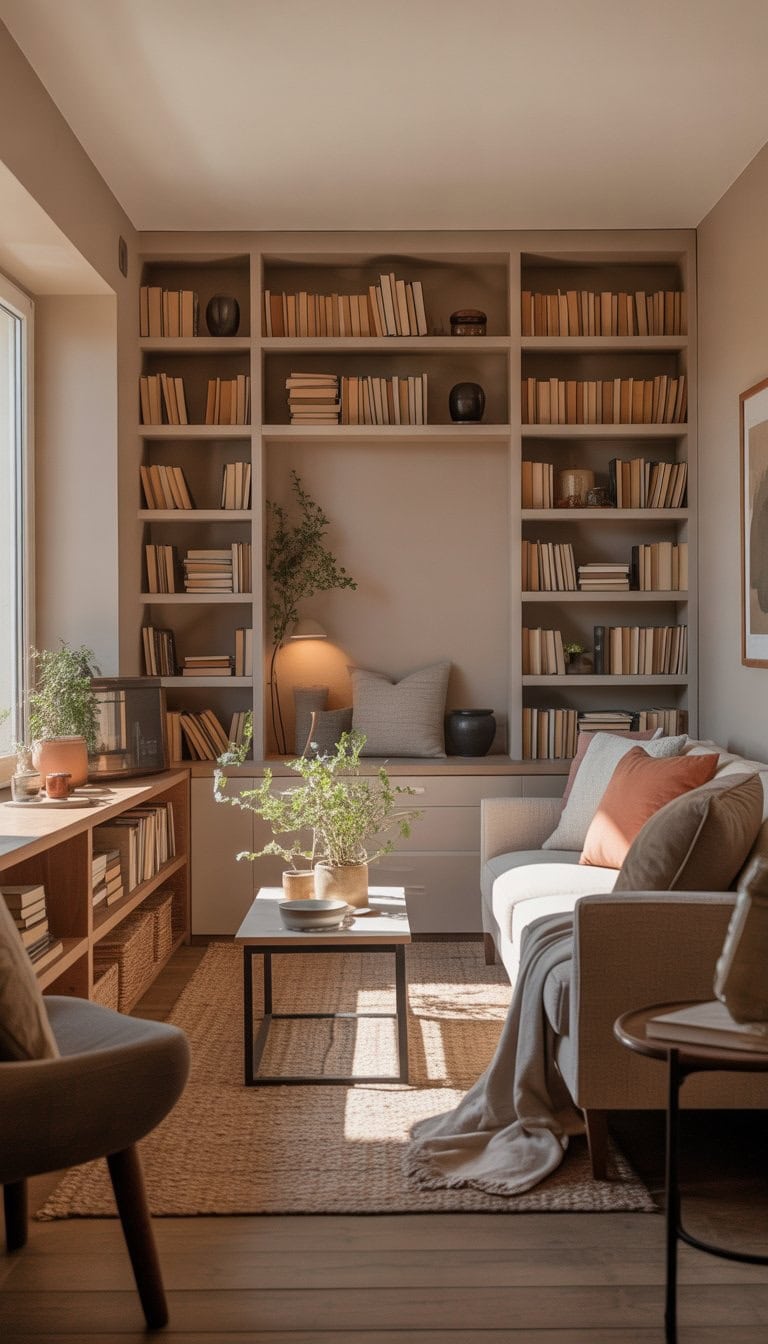
I love adding built-in bookshelves to a small living room because they instantly open up so much space. With shelves built right into the wall, I don’t have to worry about bulky furniture crowding the area.
Built-ins also let me show off my favorite books, photos, and decor without taking up any extra floor space. I can even use a mix of open shelves and closed cabinets to keep things neat and uncluttered.
If I’m looking for inspiration, there are lots of clever designs out there. Some living rooms have built-ins that wrap around fireplaces or windows, creating a cozy and custom look. You can find more built-in shelf ideas at this living room bookshelf ideas guide.
Use nesting tables for flexible surface space
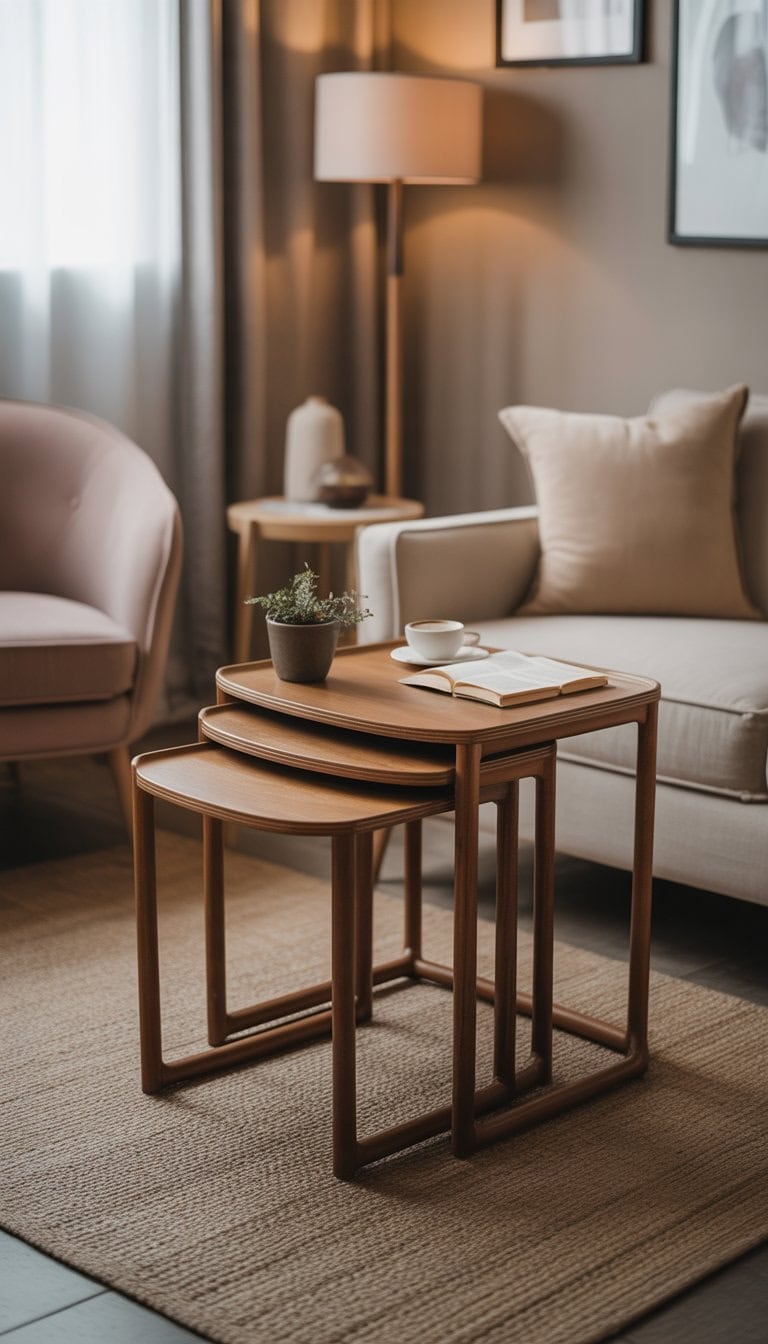
I love how practical nesting tables are for a small living room. They fit neatly together when I don’t need extra space, and I can easily pull them apart when I want to set down snacks or drinks.
When friends visit, it’s so simple to move the tables around for everyone. The different sizes let me change my layout in seconds, which feels pretty smart.
Best of all, nesting tables help keep my room looking tidy without taking up too much space. If you want more ideas on how to use them, check out these tips on nesting end tables for small living rooms.
Place a slim bench by the window for extra seating
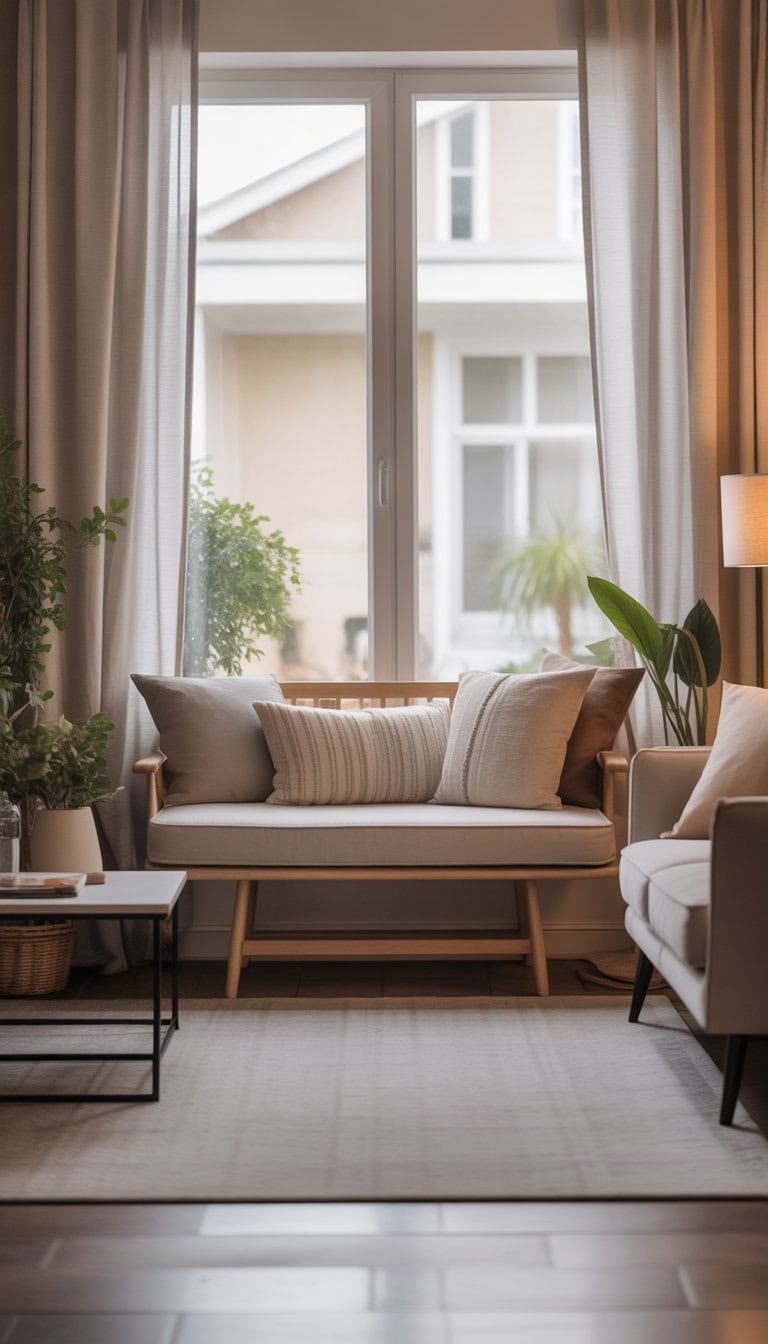
I love adding a slim bench by the window when my living room feels tight. It gives me a smart way to sneak in extra seating without crowding the space.
Sometimes I add a soft cushion or a few throw pillows to make it cozy. It turns the spot into a perfect place to sit with a book or just watch the world outside.
Benches with built-in storage are great for hiding blankets or magazines. For more ideas, I often look at photos of beautiful window seats and benches to inspire my own space.
A simple bench really can make the window area feel welcoming and useful.
Choose soft, pastel hues for a calming cozy vibe

I love using soft pastels in small living rooms because they make the space feel calm and open. Gentle colors like pale pink, mint green, or powder blue add warmth but never feel heavy.
When I pick pastels, I notice how they brighten the room without overpowering the rest of my decor. Mixing a few pastel shades also gives the space a fresh and relaxing look.
Adding cozy cushions and throws in matching tones always makes my living room feel extra inviting. If you want some ideas, many designers recommend incorporating soft pastel tones to create a welcoming and stylish spot to unwind.
Add soft lighting with floor lamps and table lamps
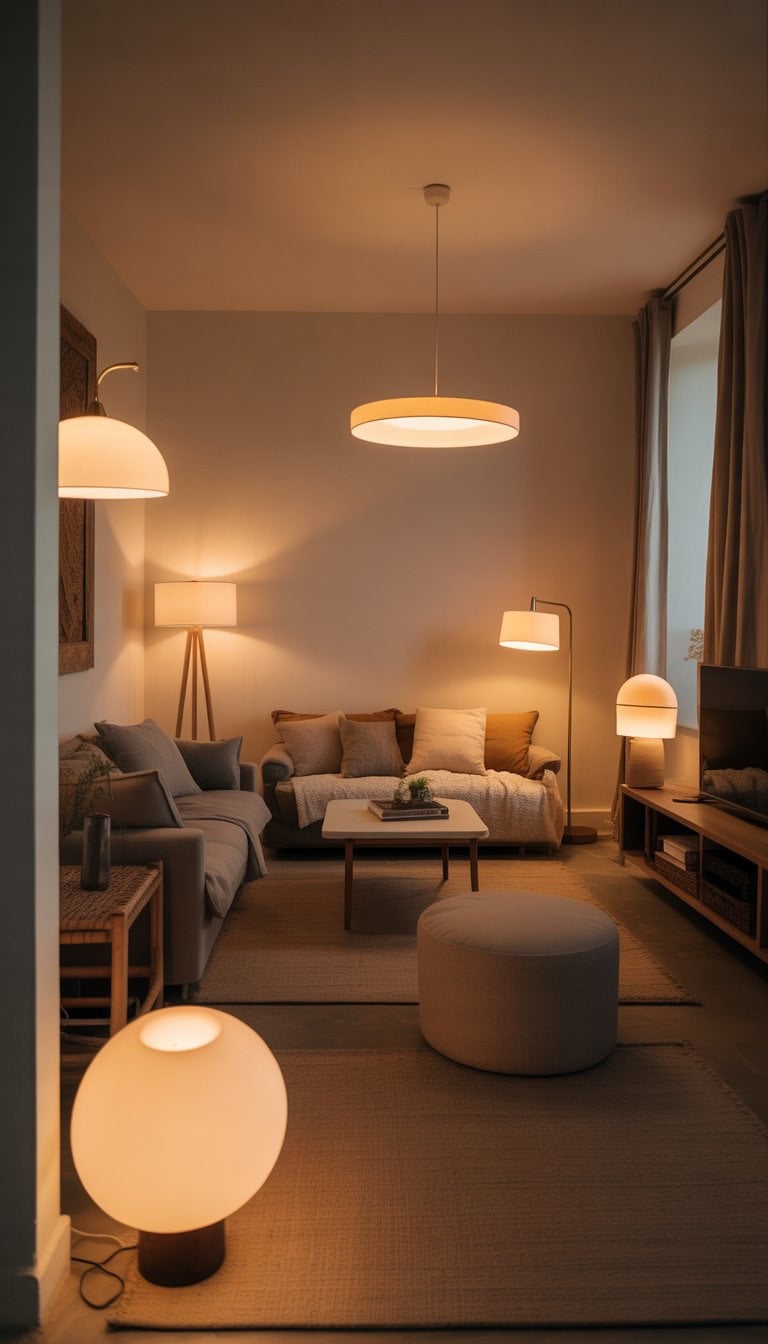
I like to use floor lamps and table lamps to make my small living room feel welcoming. These types of lights give off a soft glow that’s much cozier than harsh overhead lights.
I usually place a floor lamp in a corner or next to the sofa. It helps brighten up the space without feeling too bright or harsh. Table lamps work great on side tables, especially near seating.
Mixing both floor and table lamps lets me layer the lighting in the room. This way, I can control the mood and avoid any dark corners. If you’re looking for inspiration, you can check out ideas for cozy lighting in living rooms that work well in smaller spaces.
Understanding Small Living Room Flow
I’ve learned that a small living room can feel larger and more comfortable by making the most of light and choosing the right spot for each piece of furniture. Simple changes can make a huge difference in how easy a space is to use.
Maximizing Natural Light
Letting sunlight shine in makes everything feel more open. I like using sheer curtains instead of heavy drapes, so the room stays bright during the day. Mirrors are also one of my favorite tricks—they bounce natural light across the room, giving walls and corners a nice, airy glow.
I often choose light colors for walls and furniture. Whites, light grays, and pastels don’t block sunlight like dark shades do. If there are windows, I always keep furniture low and away from them so the light spreads everywhere. Sometimes, when I’m trying to cozy up the space, I’ll add a glass coffee table to let the sun pass right through the middle of the room.
Even small changes, like keeping windows clean and clear of clutter, really add up. If privacy is a concern, I like frosted window film because it keeps rooms bright but blocks unwanted views. You can see more ideas for lightening up a space in these small living room ideas.
Strategic Furniture Placement
Furniture placement is what brings it all together. For me, arranging seating so it doesn’t block pathways makes living rooms feel more open and easier to move through. I always avoid pushing every chair and sofa right up against the wall—a little breathing room makes a small space feel less crowded.
Multipurpose furniture is a go-to choice. Pieces like storage ottomans, benches with shelves, or a compact fold-out desk save space and add extra function. I like to lay out a rug that matches the seating area, which anchors everything and defines where the action happens.
If a room has odd angles or tight corners, I look for narrow sofas or chairs that tuck in easily. Sometimes, I’ll float a couch slightly away from the wall to create flow behind it. When I want more examples, I look for clever small space design ideas that show how traffic patterns should work, even in tiny rooms.
Adding Personality Without Overcrowding
When I want my small living room to reflect my style without feeling packed, I focus on color and texture. These simple changes help my space feel unique and inviting but still open and relaxing.
Choosing a Cohesive Color Scheme
I start by choosing just a few colors that look good together. Sticking to two or three main shades keeps the room calm, not crowded. Warm neutrals, soft grays, or pastels often make the space look bigger and brighter. I like to use a lighter color on the walls and a bolder color for small accents.
Here’s a quick example of a color combo I love:
| Base | Accent 1 | Accent 2 |
|---|---|---|
| White | Soft blue | Mustard yellow |
Using these colors for pillows, a rug, and one piece of art gives me a pop of interest without extra clutter. I also make sure my curtains match the main shade, so the eye travels smoothly around the room. I saw that designers recommend light tones to reflect light and help my space feel larger, which I found helpful in these decorating tips.
Layering Textures and Fabrics
Texture brings a lot of character to a room, especially when I want it to feel cozy but not cramped. I pick different materials for throw blankets, pillows, rugs, and curtains. For example, I’ll pair a chunky knit blanket with a velvet pillow or lay a soft woven rug over wood floors.
This way, even when I use simple furniture, the mix of textures makes the whole room pop. I pay attention to layers, stacking textiles in different thicknesses and finishes. Here’s a short list of textures I like to layer:
- Cotton (for light curtains)
- Linen (for cushions)
- Wool (for throws)
- Jute (for rugs)
Layering like this keeps my living room interesting and comfortable. At the same time, it avoids that messy, crowded look since I choose just one or two key pieces per texture. Adding variety with fabrics lets me show my personality without adding extra stuff, which is something I picked up from small living room ideas.
Frequently Asked Questions
Designing a small living room is all about using the right layout, smart furniture, and well-chosen colors. I like to combine comfort and style while focusing on methods that stretch every square foot.
How can I arrange my small living room to make it look more spacious?
I always start by moving bigger furniture away from walkways and keeping the layout open. Floating some pieces off the walls and letting the traffic flow helps my room feel less closed in. I use a large area rug to group the seating and add extra warmth underfoot.
What are some budget-friendly ways to decorate a small living room?
Switching up throw pillows or adding a cozy blanket gives my space a whole new vibe. I look for deals on used furniture or shop discount stores for multipurpose pieces, like storage ottomans. Swapping old curtains for wider, fuller ones instantly makes my space feel homey and inviting.
Which colors make a small living room appear larger and more inviting?
My favorite trick is to go with light, neutral tones on the walls and sofa. Soft whites, light grays, or pale beige reflect sunlight, making the room feel more open. To add interest, I’ll pop in a few accents with soft blue or green for a calm look, as suggested by many designers at House Beautiful.
What are the best furniture pieces for a small living room to enhance functionality?
I always reach for furniture that works in more than one way. A storage ottoman holds extra blankets and doubles as a coffee table or extra seat. A slim console table behind my sofa creates a spot for keys or lamps without taking up much room. Nesting tables and compact armchairs are also helpful.
How can I incorporate a TV in my small living room without it feeling cramped?
Mounting my TV on the wall frees up surface space and gets rid of bulky TV stands. I tuck a low media console underneath if I need storage for electronics or books. Choosing streamlined, minimal media units is one way I keep the area looking open, just like in these simple living room ideas.
Can you suggest some cozy yet elegant decor ideas for a tiny living space?
I layer soft textures like knitted throws and plush pillows to make my living room extra inviting. If I want elegance, I stick with a simple color palette and add a big mirror to reflect light. Setting tall curtains close to the ceiling boosts the sense of height and blends coziness with a touch of style, inspired by tips from The Spruce.
